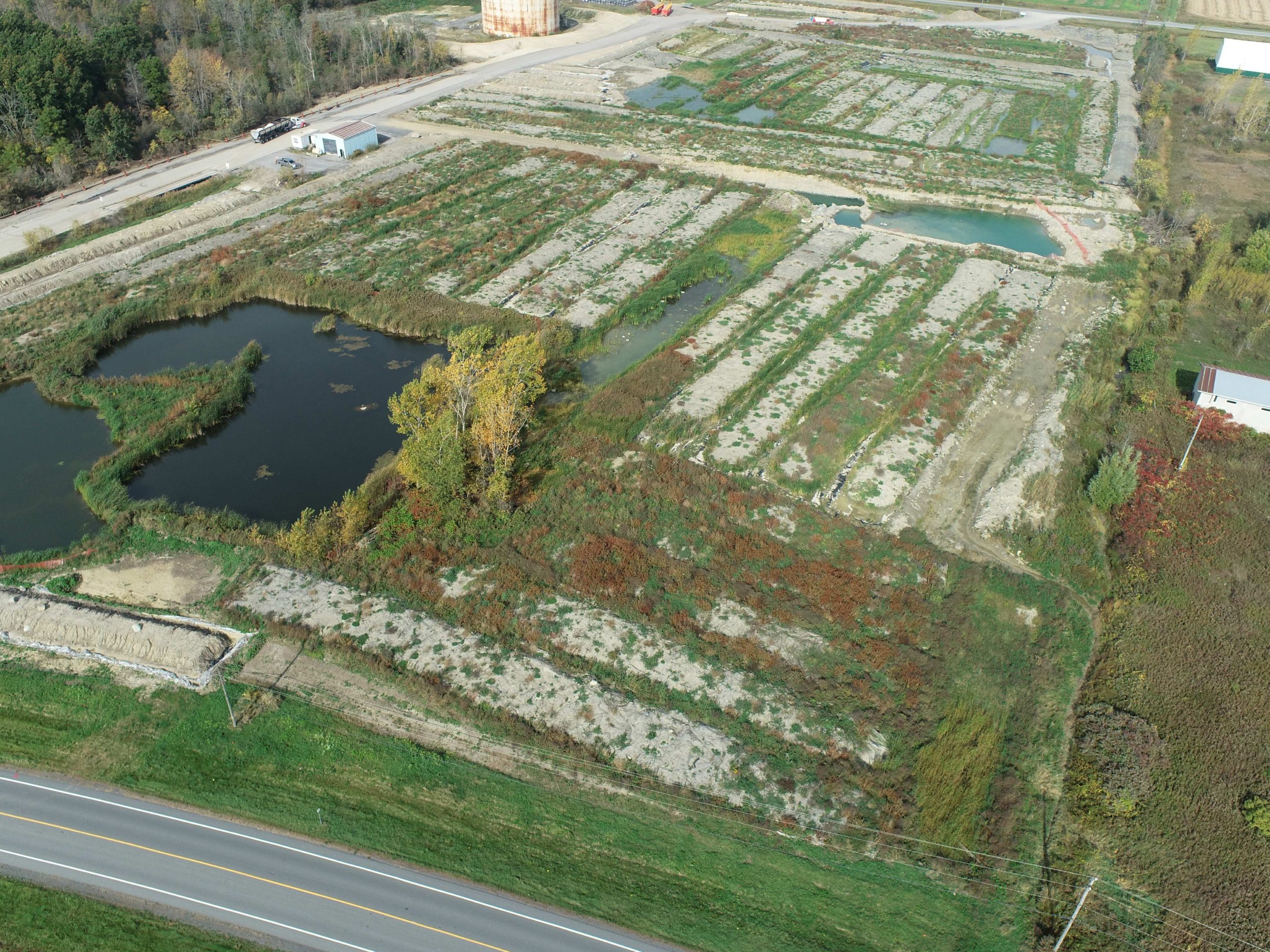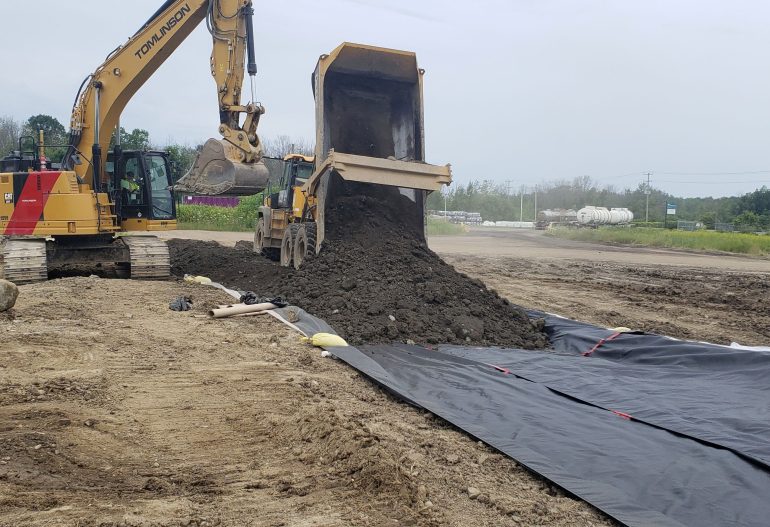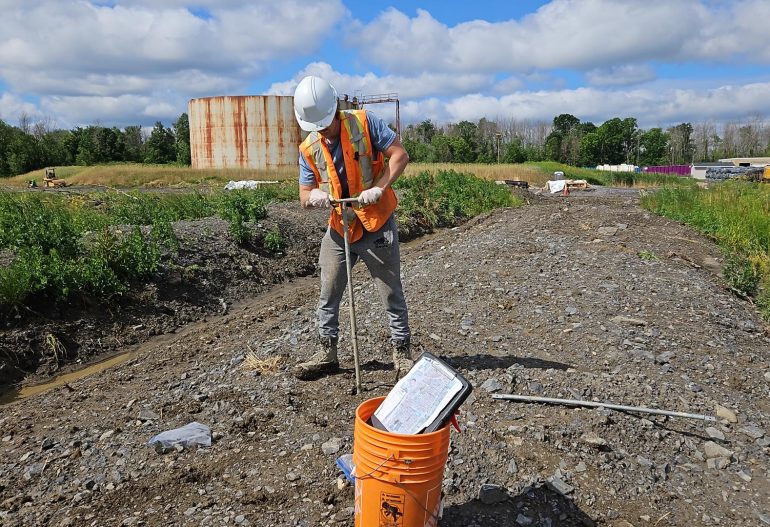10+ Hectares of Contaminated Soil – A Large-Scale Remediation Success Story

AEL led the environmental cleanup of a 20-hectare industrial site along the St. Lawrence Seaway, a former bulk fuel storage facility which exhibited a considerable amount of petroleum hydrocarbon (PHC) contamination, both in terms of total area contaminated and concentration of contaminants. The property was sold on the condition that the site was to be remediated to the appropriate standards. AEL was involved in the project from start to finish, carrying out the initial Phase One and Phase Two Environmental Site Assessments, selection of a cost-effective Remediation Action Plan (RAP), and implementation of an innovative remediation plan.
Historically used for storing and transferring diesel, kerosene, and bunker C oil, the site featured eleven massive above-ground storage tanks—each holding over 1 million U.S. gallons, connected to each other and to the loading dock by a network of above-and below-ground pipes connecting the site’s northern tank farm to the loading dock at the south. Years of leaks and spills from aging infrastructure led to widespread PHC contamination in both soil and groundwater and was present as pure product in many areas.
Developing a Cost-Effective Environmental Remedial Plan
The goal of this project was to help the client remediate the site as per the sale agreement using the most cost-effective methods. With over 10 hectares impacted by petroleum hydrocarbons (PHCs), off-site disposal was quickly ruled out due to high costs, estimated at more than $7.5 million.
Instead, AEL proposed an on-site bioremediation strategy to treat the soil by excavating it and constructing it into long, narrow windrows called “biopiles”. Biopiles get their name from the treatment process that goes on within them, which accelerates natural biodegradation of contaminants to treat the soil. Biopiles are sprayed with a mixture of bacteria, surfactants, and enzymes that rapidly break down contaminants, thereby treating the soil and restoring it to its previous healthy state.
Accelerating Hydrocarbon Breakdown Through Natural Treatment
Roughly 150,000 tons of impacted soil were excavated and transformed into 7.3 km of biopiles across the site. These biopiles were sprayed with a tailored blend to kickstart the biodegradation process. Despite the clay-heavy nature of the soil (which slows treatment), full remediation was typically achieved within two years (coarser soils can often be remediated within a single summer).
Groundwater contamination was mitigated during excavation. To safeguard against any remaining impacts, AEL pre-treated the excavation bases with targeted compounds and installed infiltration galleries—underground systems allowing future treatment injections without additional digging.


The End Result
Through the selected approach, the client was able to save millions of dollars on remediation costs. Although the timeline was increased by 1-2 years, there was enough space remaining on the site for it to remain operational. AEL coordinated with the client and the purchaser of the site to ensure that the dock and key areas of the site remained functional while the biopiles continued to treat.
This project highlights AEL’s ability to balance technical complexity with practical, cost-effective, goal-focused solutions.
Is Bioremediation Right for Your Site?
AEL’s team of Environmental Engineers and Remedial experts would be happy to discuss your site-specific details and help you understand your options.
Give us a call, or submit our contact form, and we’ll be in touch within the same or next business day.
